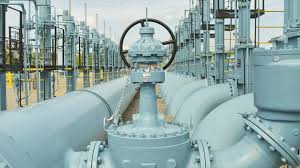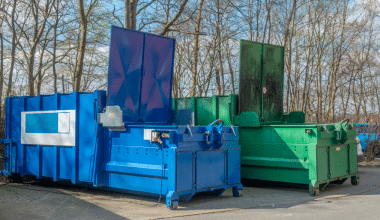Pipeline companies are critical to the supply of gasoline in an economy. Natural gas is delivered by these companies to homes, businesses, power plants, and industrial buildings. Furthermore, they transport liquid fuels to refineries, terminals, and filling stations. Oil and gas pipelines are owned by a variety of corporations, including oil and gas producers, utilities, and pipeline companies. Pipeline companies construct pipelines, which are essential connections of pipe lengths to a closed facility. It is used to transfer liquids and gasses.
Pipeline Companies
Revenues are typically used by pipeline companies to recoup capital and operating costs, service debt, and give a return to investors. Pipeline companies’ financial integrity is critical for maintaining pipelines, recruiting money to create new infrastructure, and fulfilling the market’s changing needs.
#1. Saudi Arabian Oil Company
Saudi Arabian Oil Company (2222.SR) is Saudi Arabia’s national oil corporation, founded in 1933. The firm is the single entity in the country permitted to explore, produce, and process hydrocarbons. The company’s upstream sector explores, produces, and markets crude oil as well as other products such as natural gas and natural gas liquids (NGLs), whilst the downstream section manufactures petrochemicals and provides refining, retailing, storage, supply, and transportation services. Saudi Arabian Oil firm (2222.SR) was the world’s largest oil firm in fiscal year 2021, with a daily production of 9.2 million barrels of crude oil. Furthermore, the corporation owns and runs a 12,000-mile pipeline network. It connects the producing fields to export terminals, processing factories, and distribution centers.
#2. China National Petroleum Corporation
China National Petroleum Corporation is a prominent Chinese oil and gas business. The corporation explores, refines, and markets oil and its byproducts such as kerosenes, lubricating oils, diesel oils, chemical light oils, and so on. China National Petroleum Corporation operates a pipeline network totaling roughly 25,000 kilometers. This includes a crude oil pipeline network of over 7,000 kilometers and a natural gas pipeline network of approximately 17,000 kilometers.
#3. Enterprise Product Partners
Enterprise Products Partners L.P. (NYSE:EPD) is a midstream corporation based in the United States. The Mid-America Pipeline System is the longest of Enterprise Products Partners (NYSE:EPD) NGL pipelines, stretching 19,803 miles. The NGL component of the corporation includes processing plants, marine ports, fractionation, and storage facilities. Enterprise Products Partners L.P.’s (NYSE:EPD) crude oil pipeline network extends 5,737 miles and has a total operational storage capacity of 31.2 million barrels.
Pipeline Companies in Texas
There are three major sectors in the energy industry: upstream, midstream, and downstream. Each of them serves as a link in a chain that transports oil and gas from wells to end consumers. The upstream sector is responsible for the exploration and extraction of oil and gas through wells. The midstream sector collects, processes, stores, and transports the output of those wells to the downstream sector, which then converts it into higher-valued products like gasoline and plastics.
#1. Houston Pipe Line Co.
It is a delight to have one of the largest power portfolios in the United States, with assets spanning from coast to coast, 38 states, and an international office in Beijing. Their primary operations include natural gas transportation, storage, and terminal, as well as crude oil, NGLs, refined products, and liquefied natural gas.
#2. Williams Gas Pipeline Transco
Williams manages 30% of the natural gas utilized in the United States each day to heat our homes, cook our food, and produce energy. It is also important to note that Williams collaborates closely with clients to build the infrastructure needed to serve rising markets and safely supply natural gas products to power the clean energy economy. They dependably deliver value to their employees, investors, customers, and communities by running their businesses with authenticity and a safety-driven culture, driving their industry into the future.
#3. MPG Pipeline Contractors, LLC.
MPG Pipeline Contractors, LLC is a premier pipeline contractor in the United States as a whole. They provide quality services to the oil and gas industry such as pipeline construction, facility building, pipeline integrity management, and pipeline maintenance. Their objective is to deliver the finest quality construction services and the safest working environments possible for the benefit of our customers, employees, and subcontractors.
How Do Pipeline Companies Make Money?
Because of the increasing importance of income in these uncertain times, some investors may be interested in researching midstream. The midstream industry is the energy infrastructure that connects upstream wellheads to downstream clients. As a result, the business models rely on fees and contracts rather than oil and gas prices. Pipelines transport energy from where it is generated to where it is converted into useful fuels and goods, and then to our communities. Pipelines transport crude oil, refined products such as gasoline and diesel, and natural gas liquids such as ethane and propane. Most generate money by carrying oil and gas through their pipelines for a charge guaranteed through long-term contracts. These agreements give pipeline operators a consistent source of cash flow, which they can use to pay dividends to investors and invest in expansion projects.
The midstream sector is one of three links in the oil and gas value chain, which includes enterprises that collaborate to help a market run smoothly. In the energy industry, the value chain transports hydrocarbons from the wellhead (upstream) to end customers (downstream). Transportation, processing, storing, and marketing of hydrocarbons such as natural gas, oil, and natural gas liquids (NGLs) are all activities in the midstream industry. Each of these energy commodities has its own network of interconnected midstream assets designed to maximize the value of every barrel extracted from the earth.
The midstream sector is critical not just for supporting the oil and gas industry’s infrastructure demands, but also for investors. Midstream companies use their critical role in the energy sector to generate a lot of cash flow, allowing them to pay out high-yielding dividends.
How Pipeline Companies Make Money
Pipeline companies can profit from each link of the oil, gas, and NGL value chains, collecting revenue through three key channels: fees, regulated tariffs, and commodity-based profits. Each link in the chain has a preferred revenue-generating structure. Gathering pipelines, for example, are typically fee-based. Oil and gas producers will enter into a long-term contract with a midstream corporation, either owned by them or a third party, to build a gathering infrastructure to service future wells. The producer will then pay a price for each barrel that passes through the system, much like a car paying a toll to cross a bridge. Storage facilities, like metered parking, typically charge fees for space.
Pipeline Companies in the US
The United States is home to the most oil pipelines in the world. As of December 2020, the country had 160 active oil pipelines and another 22 under construction. The United States is also one of the world’s leading countries in terms of the number of gas pipelines.
#1. The Williams Companies
The Williams Companies, Inc. is an American energy corporation headquartered in Tulsa, Oklahoma. Its primary activity is natural gas processing and transportation, with auxiliary petroleum and electricity-producing assets. It is a Fortune 500 firm, and its common stock is included in the S&P 500. Williams paid approximately $287 million for the Great Lakes Pipeline Company, America’s largest petroleum product pipeline at the time. With the purchase of Northwest Energy Company in 1982, it expanded into natural gas transportation, and with the purchase of Transco Energy Company in 1995, it extended its reach to the East Coast. Williams purchased Barrett Resources in 2001, gaining access to more national gas deposits.
#2. Colonial Pipeline
The Colonial Pipeline is the largest pipeline system in the United States for refined oil products. The pipeline is 5,500 miles long and can transport 3 million barrels of petroleum per day between Texas and New York. Colonial is a pipeline that runs more than 5,500 miles (8,850 kilometers) from Houston, Texas, along the Gulf of Mexico coast, to the ports of New York and New Jersey. The pipeline passes across Texas, Louisiana, Mississippi, Alabama, Georgia, South Carolina, North Carolina, Virginia, Maryland, Delaware, Pennsylvania, and New Jersey’s coastline states. Tennessee is additionally served by branches of the main pipeline. It transports 1108 US gallons (3.8108 L) of gasoline, home heating oil, aviation fuel, and other refined petroleum products to communities and companies throughout the South and Eastern United States on a daily basis.
#3. ONEOK
Oneok, Inc. is a Tulsa, Oklahoma-based American diversified firm principally focused on the natural gas industry. The corporation is a member of the Fortune 500 and the S& P 500. Oneok was created in 1906 as Oklahoma Natural Gas Company, but in December 1980 it changed its name to Oneok.
Natural Gas Pipeline Companies
Natural gas is a fossil fuel that can be discovered beneath the Earth’s surface or produced through a process known as fracking. The top three manufacturers are the United States, Russia, and China.
#1. Enbridge
Enbridge Inc. is a multinational pipeline and energy company headquartered in Calgary, Alberta, Canada. Furthermore, Enbridge owns and operates pipelines throughout Canada and the United States, transporting crude oil, natural gas, and natural gas liquids. Imperial Oil established the Interprovincial Pipe Line Company Limited in 1949 to deliver Alberta oil to refineries. It has grown over time by acquiring other existing pipeline firms and expanding their projects. Enbridge moved almost 32 billion barrels of crude oil between 2012 and 2021. Enbridge has constructed various renewable energy projects in North America and Europe, including wind, solar, hydroelectric, and geothermal, and has established a 2050 net zero greenhouse gas emission objective.
#2. TC Energy
TC Energy Corporation is a large North American energy business based in Calgary, Alberta, Canada, that develops and runs energy infrastructure across Canada, the United States, and Mexico. The company’s core businesses are as follows: Pipelines for natural gas, liquids, and energy. TC Energy is one of North America’s largest natural gas pipeline businesses. It has about 58,000 miles of pipelines across the United States, Mexico, and Canada.
#3. Plains All American Pipeline
The Plains All American Pipeline, L.P. is a master limited partnership that transports, markets, and stores liquefied petroleum gas and petroleum in the United States and Canada through a pipeline. Plains Pipeline LP owns and operates North America’s largest crude oil pipeline network.
What Is the Best Pipeline Company to Invest in?
Pipelines and related energy infrastructure are operated by more than 40 publicly traded midstream firms. This provides investors with numerous possibilities. Here’s a rundown of some of the best pipeline stocks:
- ENBRIDGE (NYSE:ENB)
- Enterprise Products Partners (NYSE:EPD) is a publicly traded company in the United States.
- TC Energy (TRP) (NYSE:TRP)
- Kinder Morgan International (NYSE:KMI)
- Williams Companies (NYSE:WMB)
- Energy Transfer (NYSE:ET)
- ONEOK (NYSE:OKE)
What Is a Pipeline in the Industry?
Pipelines. Pipelines are regarded as part of the transportation sector. The pipeline sector transports a number of chemicals, including crude oil, refined petroleum products, and natural gas, via hundreds of thousands of kilometers of primarily subterranean pipelines.
Who Owns the Pipelines in the USA?
Plains Pipeline LP owns and operates North America’s largest crude oil pipeline network. The company’s pipeline network had a total length of 14,919 miles as of February 2022, ranging from the northwest corner of Alberta to the southern coasts of Texas and Louisiana.
How Do Pipelines Make Money?
Transportation is the lifeblood of the pipeline industry and the most common source of revenue. Pipelines charge users a fee per unit of hydrocarbon transported. These are also done through contracts that frequently use minimum volume commitments, which protects investor revenue even further.
What Is an Example of a Pipeline Business?
Target, as a pipeline company, has agreements with a variety of suppliers from which it obtains things for sale in its shops. Target is responsible for the capital needed to maintain inventory as well as marketing to ensure customers enter its stores.
What Does Pipeline Mean in Investment?
In finance, the phrase pipeline refers to the progression of a long-term aim through a number of discrete stages. Private equity (PE) firms, for example, will use the term “acquisition pipeline” to refer to a group of companies that they have identified as potential acquisition candidates.
Who Owns the Most Pipeline?
The following firms own the majority of the oil pipelines in terms of length: Transneft, Russia – 42,383 km (26,335 miles) – 15%. Enbridge, Canada – 33,750km (20,971 miles) – 13%. PipeChina, China – 15,947 kilometers (9,909 miles) – 5%
Who Has the Biggest Pipeline?
Colonial Pipeline Company 5,500 mi (8,850 KM) The Americas have slightly more than half (51%) of the world’s total oil and gas pipeline length, with the Colonial Pipeline being the longest.
What Are the Three Types of Pipelines?
Along the transportation route, there are three basic types of pipelines: gathering systems, transmission systems, and distribution systems.
What Are the Four Types of Pipelines?
Pipeline Classifications
- Gathering pipelines
- Transmission pipelines.
- Distribution pipelines.
- Flowlines.
- Feeder pipelines.
Why Is it Called a Pipeline?
The term “pipeline” is derived from a rough comparison with physical plumbing in that a pipeline often permits information to flow in just one direction, much like water does in a pipe.
Conclusion
Pipeline systems are operated by a number of companies across North America. Most generate money by carrying oil and gas through their pipelines for a charge guaranteed through long-term contracts. These agreements provide pipeline operators with a consistent source of cash flow, which they can distribute to investors as dividends or invest in expansion projects.
Related Posts
- What is Sales Forecasting?Methods and Real-world
- SALES PIPELINE: Meaning, Stages, Software Difference
- OIL COMPANY STOCKS: Top Oil Stocks by Countries
- SALES PROSPECTING: Definition, Method & Template






